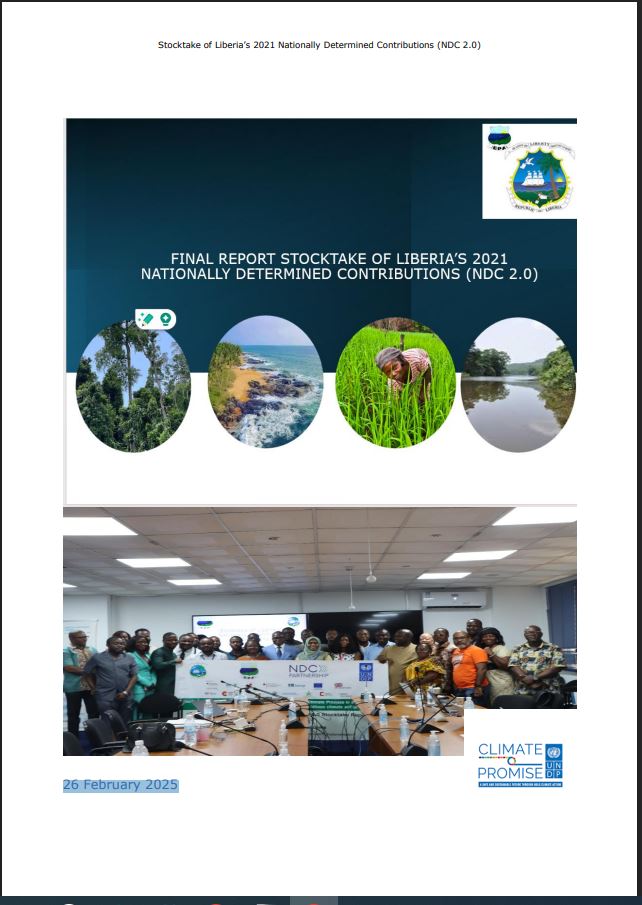Executive Summary
This report evaluates Liberia’s progress and efforts toward climate action within the framework of the
Paris Climate Agreement. Ratified by 195 nations at COP21, the Paris Agreement sets a long-term
objective to limit global temperature increases to below 2°C, with efforts to cap it at 1.5°C above
pre-industrial levels. As part of this global effort, Liberia has submitted its Nationally Determined
Contributions (NDCs) to the United Nations Framework Convention on Climate Change (UNFCCC).
Liberia, contributing only 0.03% of global greenhouse gas (GHG) emissions, remains highly
vulnerable to climate change impacts. Despite its negligible contribution to climate change, the
government demonstrated leadership by submitting its Intended Nationally Determined Contribution
(INDC) in 2015 and ratifying the Paris Agreement in 2018. The country committed to reducing GHG
emissions by 15% below business-as-usual levels by 2030, with the aim of achieving carbon neutrality
by 2050, conditional upon international support. In 2021, Liberia revised its NDC, pledging to reduce
economy-wide GHG emissions by 64% below the projected business-as-usual level by 2030, with a
significant portion contingent on international support.
The Government of Liberia, with support from UNDP and other partners, is now preparing to update
its 2021 NDC (NDC 2.0) and submit NDC 3.0 by the second quarter of 2025. This report provides a
comprehensive assessment of the progress made in implementing Liberia’s NDC 2.0, identifies gaps
and areas for improvement, and evaluates the gender responsiveness of NDC efforts.
The stocktake assessment revealed significant GHG emission reductions in the energy, transport, and
forestry sectors, achieving 20.47% of the targeted GHG reduction by 2024. This assessment included
detailed consultations with key stakeholders such as NDC Focal Points and GHG Data Analysts. The
energy sector saw notable advancements, with cumulative hydropower generation amounting to 105
MW and solar energy production totaling 5.6 MW between 2021 and 2024. The transport sector
experienced the adoption of electric vehicles, including two-wheelers, three-wheelers, and fourwheelers, with a total of 175 electric vehicles in use. The forestry sector achieved afforestation of
45,814 hectares, primarily through natural regeneration.
Category
Ministry/Agency/Institution
<< Back To All Documents >>

